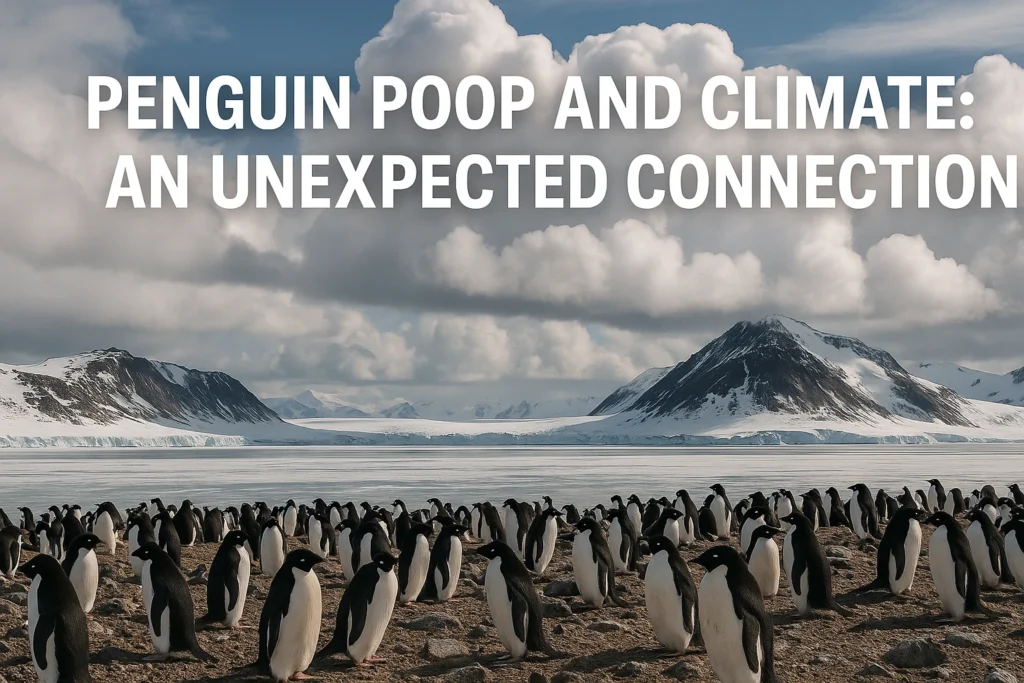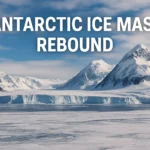Prologue: A Pink Snow Mystery
Dr. Sarah Jenkins knelt in the pink-tinged snow near Antarctica’s Marambio Base, her chemical sensors buzzing with unprecedented readings. The vibrant hue stretching across the icy landscape wasn’t some exotic algae or mineral deposit—it was the accumulated waste of 60,000 Adélie penguins, and it was performing an extraordinary atmospheric alchemy. As her portable mass spectrometer registered ammonia levels 1,000 times above normal, Jenkins realized she was witnessing one of nature’s most unexpected climate feedback loops: penguin poop creating clouds.
This accidental discovery, published in Communications Earth & Environment, reveals how the digestive processes of Antarctica’s iconic birds influence weather patterns across the southern continent—with potential implications for global climate models.
Chapter 1: The Accidental Discovery That Changed Climate Science
From Air Quality Study to Groundbreaking Revelation
What began as routine atmospheric monitoring near penguin colonies uncovered startling anomalies:
- Unexpected cloud formations consistently appeared downwind of major rookeries
- Ammonia concentrations remained elevated months after penguins migrated north
- Aerosol particle counts rivaled those near industrial zones
“We set out to measure human pollution impacts and instead found nature’s own sophisticated atmospheric chemistry lab—powered by penguin digestion.”
— Dr. Carlos Mendez, Atmospheric Chemist and co-author
The Science Behind the Poop-Cloud Connection
Researchers mapped the complete process:
- Dietary Foundations: Penguins consume sulfur-rich krill (up to 2kg daily per bird)
- Waste Production: Guano deposits release ammonia (NH₃) as they decompose
- Atmospheric Reactions: Ammonia bonds with sulfur dioxide to form ammonium sulfate particles
- Cloud Formation: These particles act as nucleation sites, accelerating cloud droplet formation by 10,000x
Chapter 2: Climate Implications of the Penguin Effect
The Dual Role of Penguin-Made Clouds
The clouds generated through this process create competing climate impacts:
❄️ Cooling Effect: Bright, reflective clouds increase albedo, bouncing solar radiation back into space
🔥 Warming Effect: Low-lying clouds may trap heat over Antarctica’s already reflective ice surfaces
While Arctic studies suggest a net cooling effect, Antarctica’s unique conditions—with its highly reflective surface—could potentially reverse this outcome.
Quantifying the Impact
Current estimates suggest:
| Factor | Impact Scale | Climate Equivalent |
|---|---|---|
| Single large colony | 6,000 tons NH₃/year | Could influence regional weather patterns |
| Continental scale | Potential to offset 0.5% of warming | Comparable to small volcanic eruptions |
| Pre-industrial era | Likely 3-5x stronger effect | Before commercial hunting reduced seabird populations by 70% |
Chapter 3: The Delicate Marine Web Behind the Phenomenon
The Krill Connection
The entire process hinges on Antarctic krill populations:
- Dietary Dependence: Penguin guano chemistry changes with krill availability
- Population Collapse: Some regions report 80% krill declines since 1970s
- Cascading Effects: Fewer krill → less sulfur → weaker cloud formation potential
Conservation Implications
These findings add new dimensions to protecting polar ecosystems:
- Atmospheric Services: Penguin habitats may provide unrecognized climate regulation
- Marine Protection: Krill fishery management takes on added importance
- Climate Modeling: Wildlife populations become new variables in predictions
Chapter 4: Historical Context and Future Directions
Pre-Industrial Climate Impacts
Before commercial exploitation:
- Seabird populations were 5x larger
- Guano production and cloud formation likely more significant
- Potential contribution to maintaining cooler pre-industrial temperatures
Open Research Questions
Scientists are now investigating:
- How other seabird species contribute to this effect
- Whether changing krill diets alter cloud-forming potential
- If artificial “bio-inspired” cloud seeding could leverage this mechanism
Epilogue: Rethinking Our Frozen Ecosystem
As Dr. Jenkins packed her research equipment, she reflected on the profound connections her team had uncovered. “We’re just beginning to understand how deeply life is woven into Earth’s systems,” she noted. “From the depths of the Southern Ocean where krill swarm, to the digestive tracts of penguins, all the way up to the clouds above us—it’s all connected in ways we’re only starting to map.”
The discovery serves as both a scientific revelation and a humbling reminder: even in Earth’s most remote wilderness, life finds ways to shape the very air and climate around it.
Should climate models start tracking penguin populations as seriously as industrial emissions? Share your perspective below! 🐧☁️



